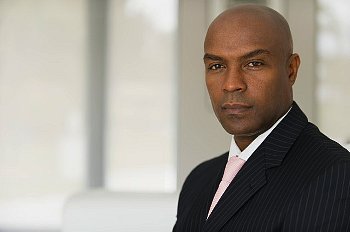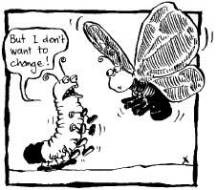
Change management is open to sundry misinterpretations and misconceptions; hence it is important to clarify exactly what it is and what it is not. A study by Accenture (2011) captured the erroneous perceptions many managers have about change management, as well as the challenges that change management may pose for them.
Myth 1: People are willing to change their behaviour because leadership says so.
Most managers believe that the change will resolve itself because of leadership direction. Change management is viewed as an unnecessary component and instead of instituting the change, a change management program could ‘’drag’’ the change.
The reality is that, while change can be imposed externally, an internal process of transition needs to occur before an employee is psychologically ready to adjust to the change. This process needs to be acknowledged and managed, in order to ensure that the employee is prepared to contribute optimally in the new environment.
Sundry theories have been proposed by psychologists to explain this phenomenon. An example is the William Bridge’s model. William Bridges’ theory involves a three-phase process of Letting Go, The Neutral Zone and the New Beginning.

During the Letting Go stage, employees deal with their tangible and intangible losses and mentally prepare to move on
In the Neutral Zone, critical psychological realignments and re-patterning takes place. This is all about helping get employees through it, and capitalizing on all the confusion by encouraging them to be innovators.
In the New Beginning, employees develop the new identity, experience the new energy, and discover the new sense of purpose that make the change begin to work.
The responsibility of a change manager is to help the affected employees let go of the old ways of working and accept the new environment, in such a way that organizational objectives are achieved.
Myth 2: Change management is training
This is a common trap that many managers fall into when they equate change management with only training activities.
Experience has shown this misconception generally results in low adoption of the change. A large European company illustrated this mistaken belief by using a one-day training session for an Enterprise Marketing Management system implementation as the only ‘’change management’’ activity for the end users. With no accountability associated with the use of the tool, the system was retired within 12 months due to lack of adoption and use.
Myth 3: The benefits of change management efforts are not quantifiable
Managers do not often see the value of change management as the benefits seem intangible.
On the contrary, research has shown that excellent change management leads to outstanding returns. A McKinsey study of 40 organizations (SMG Knowledge, 2014) found the return on investment differed greatly depending on the degree of change management employed for significant change projects such as enterprise software initiatives or mergers and acquisitions. When a comprehensive change management program was integral to the initiative – the return on investment averaged 143%. The return on investment for projects was 35% which employed either no or poor change management.
Apply the McKinsey findings to a million dollar technology deployment and the difference in derived value would be just over $1M ($1,080,000). If the organization spent an additional $200,000 on excellent change management services the ROI would be 440%. A compelling return, indeed.
Myth 4: Change Management is ‘’politicking and persuasion’’
Managers believe change management is synonymous with hand-holding and pandering to people’s emotions during a roller-coaster change. Nothing could be farther from the truth.
True, change management caters to the minds and emotions of employees, utilizing practices from various disciplines of psychology. However, change management also contributes to delivering solid bottom-line financial returns to the company.
Change management identifies opportunities for training and communications, as well as a multitude of other techniques to help change leaders overcome resistance, help people psychologically adjust to the changes, and accelerate necessary behavior changes that drive new business results.
Myth 5: Change Management should be targeted at end users only
Managers believe that change management efforts should be targeted mainly at the employees who are affected by a change. Hence, they believe a memo, a speech or an email should suffice for effective change management.
On the contrary, a comprehensive stakeholder analysis usually reveals that major organizational changes usually affect, not just employees, but external stakeholders, as well. Trade unions, government bodies, customers, vendors, suppliers and regulators are among the stakeholder groups who may also need to be informed about major organizational changes. These stakeholders usually have unique concerns and social styles which have to be taken into consideration to ensure full adoption of the new changes. Hence, the need for a well-coordinated communications and stakeholder management approach.
Myth 6: Change Management should be handled by Human Resources
Managers believe that change management projects fall within the ambit of Human Resources. Hence, they are reluctant to hire external change management consultants at the beginning of any major change initiative. However, as the complexity of the project builds, it soon becomes apparent that additional resources are required to co-ordinate the change management efforts.
In addition to the skills of external consultant, the leadership of the organization also needs to support the changes by ‘’walking the talk’’ and not just championing the new changes. A collaborative effort is required from Human Resources, Communications, consultants and leadership to ensure that employees fully embrace the new environment. One cannot just send a memo and expect deep-rooted changes to occur.
An article in Forbes (2012) puts this succinctly:
How does culture change? A powerful person at the top, or a large enough group from anywhere in the organization, decides the old ways are not working, figures out a change vision, starts acting differently, and enlists others to act differently. If the new actions produce better results, if the results are communicated and celebrated, and if they are not killed off by the old culture fighting its rear-guard action, new norms will form and new shared values will grow.
What does NOT work in changing a culture? Some group decides what the new culture should be. It turns a list of values over to the communications or HR departments with the order that they tell people what the new culture is. They cascade the message down the hierarchy, and little to nothing changes.


















